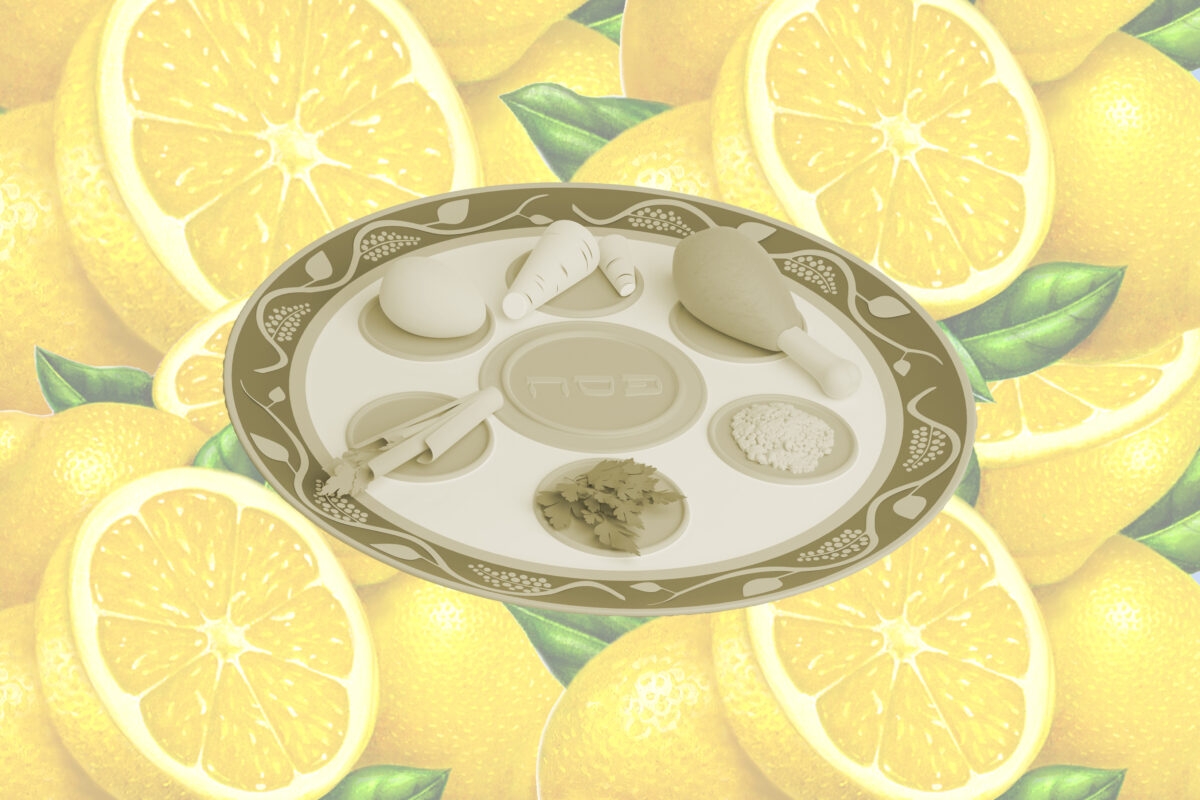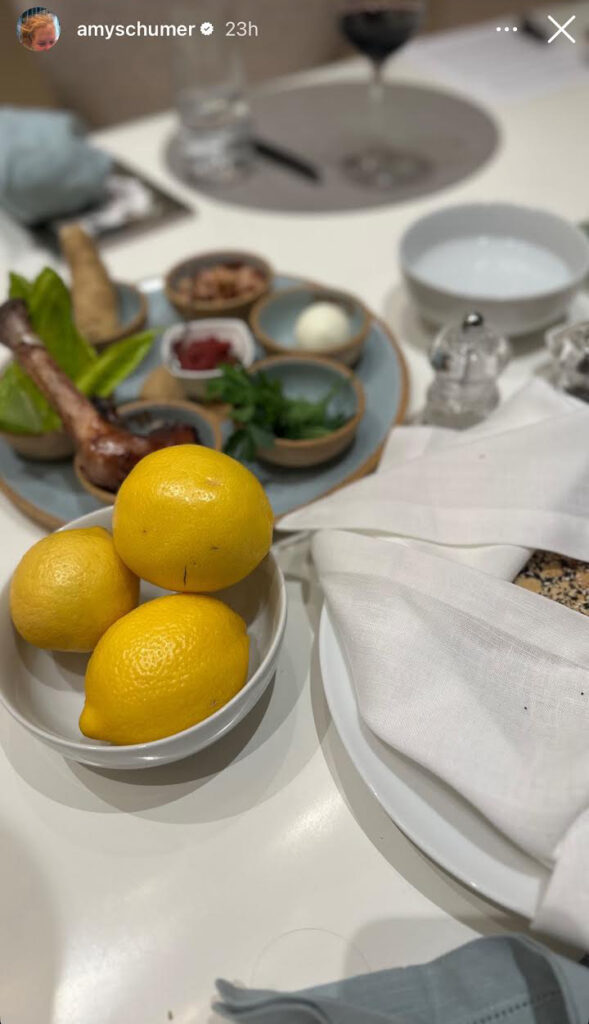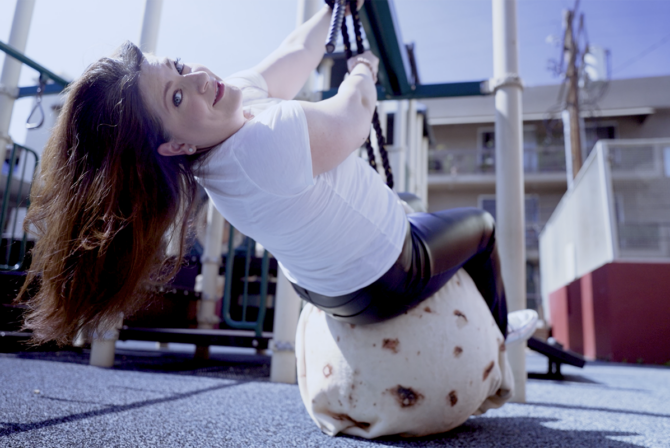This past weekend, comedian Amy Schumer shared a picture of her Passover seder table and her seder plate, that plate full of symbolic foods that’s at the center of the holiday table. Next to it, surrounded by the usual parsley, horseradish and haroset, was a bowl full of round lemons.
Schumer wasn’t the only one to include the sour citrus fruit on the plate. I, too, included a bright yellow slice on mine, and across the world so many joined in, called in by Rachel Goldberg-Polin, the mother of slain hostage Hersh Goldberg-Polin, who was executed with four others in a tunnel in Gaza last summer. Or rather, the call came from her husband, Jon. When Rachel went on Dan Senor’s Call Me Back podcast earlier this month, she relayed a message from her husband to the host and the rest of the world: “Tell everyone you are to have a terrible, terrible seder,” she shared on his behalf, saying every person should have on their seder plate a piece of masking tape with the number of days since October 7, the number of days the current hostages have been in captivity. And, she said, everyone should have a lemon, “that’s yellow, that’s bitter, hard to eat, hard to swallow.” Yellow is the color of the ribbon for the hostages, its brightness meant to stick out in the middle of the seder as a constant reminder. Adding new elements to the seder plate is hardly a new tradition; some add an orange to their plate yearly to symbolize LGBTQ+ rights and other marginalized communities add olives and olive oil for peace.
Goldberg-Polin also encourage people to include other symbolic objects on their seder tables, including an unopened yellow flower that should be in water but is not, like the hostages unable to thrive on little nourishment, living without light. “Make sure you have cried at that seder or you would’ve not fulfilled your obligation as having seen yourself as having been in Egypt,” she added.
“I think this year there is one question and one question only: ‘Why are they there?!'” Goldberg-Polin said to Senor. “We have an obligation this year to really beat ourselves up at the seder because the whole point of Passover, it needs to be a commemoration of leaving the worst point of bondage and slavery that we ever experienced, and how can we do that this year when we know that there are still 59 people who are still there, 24 of whom are still alive.”
Alana Zeitchik, whose loved one, David Cunio, is still in Hamas captivity, also spoke out about how difficult it is to have Passover when Cunio is literally in the Mitzrayim, which means “a narrow place” — a literal description for the Hamas tunnels many of the hostages are still in.
“I have two things to ask of you today whether you’re Jewish or not. First I ask that you imagine yourself as David, in darkness with limbs and lungs compressed at all times yearning to open his arms wide and gather up Emma and Yuli who are waiting like a light at the end of the tunnel,” Zeitchik wrote on her social media, referring to Cunio’s twin daughters who were also taken hostage by Hamas but released in the very first hostage deal of November 2023. “And secondly, you must ask yourself where *you* are bound. What is your narrow place? Do you have a narrow mind, or a narrow heart? And what will you do to liberate yourself from it? Because none of us are free until we are all free.”
We’ve already held our seders for this year, but perhaps it is worthy to keep these symbolic foods and objects on our tables for the rest of the holiday, and for as long as there are hostages still in that narrow place.









